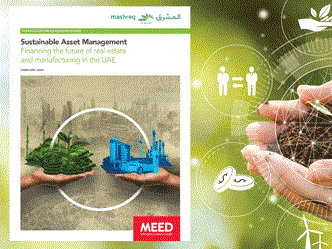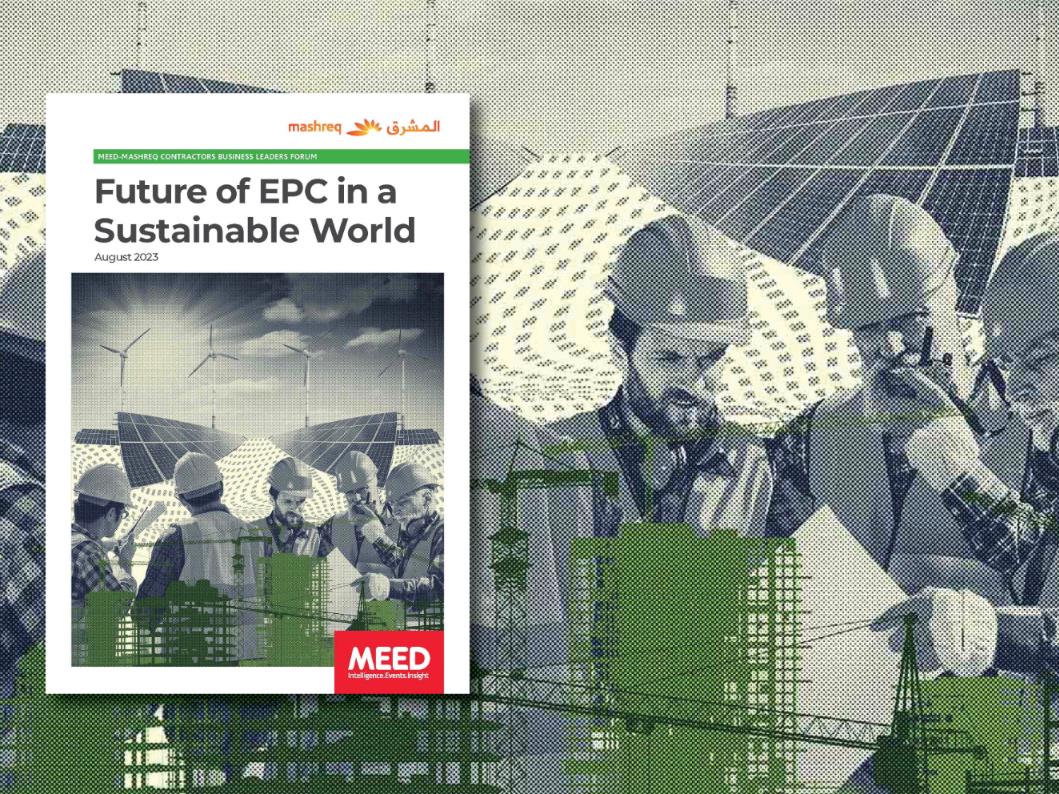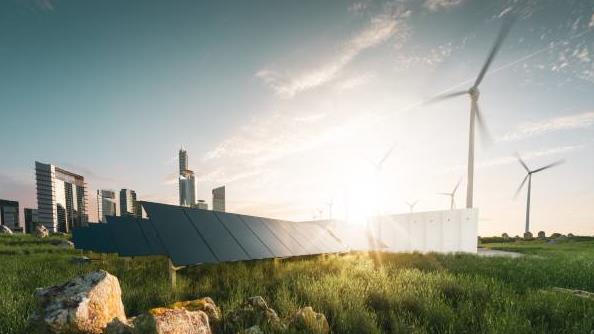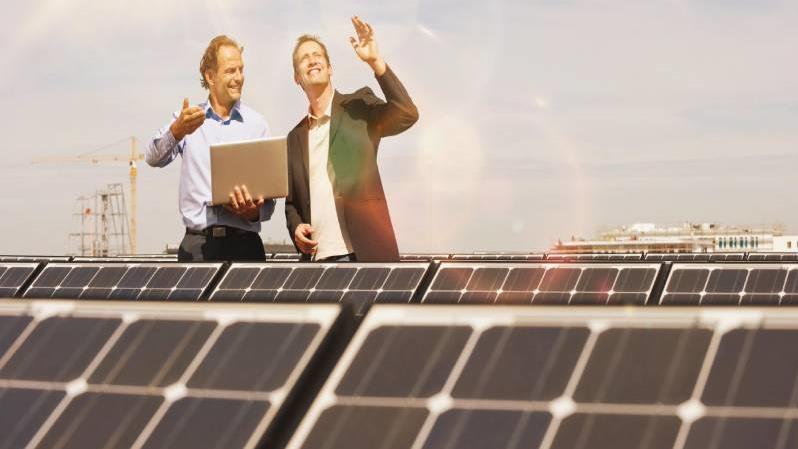

Sustainability-focused procurement practices are increasingly defining the project delivery landscape, revolutionising the way projects are planned, executed and maintained.
This is just as well; according to a report by McKinsey & Company, the construction industry is responsible for approximately 40 per cent of Co2 emissions and indirectly responsible for 25 per cent of all greenhouse gas (GHG) emissions.
It is no wonder the pressure to reduce carbon emissions is intensifying across key industries such as construction, transport, infrastructure, energy and utilities as key stakeholders push for companies to become environmentally conscious and utilise capital and resources more efficiently.
Speaking during a live webinar organised by Mashreq and MEED, industry experts highlighted the significance of incorporating sustainability initiatives across the project lifecycle and how such practices could pave the way for innovation and change.
Sustainable procurement in the Middle East
“Historically, procurement decisions centred around cost, quality and time,” said Arun Mathur, executive vice-president and global head of the contracting finance division at Mashreq.
“While these three factors remain crucial, the focus of projects is gravitating towards the people, planets and profits of an environmentally-friendly world.”
Today, organisations must comprehensively evaluate their environmental, social and governance (ESG) footprint to identify significant risk areas and improvement opportunities. They must determine what aligns with their overall ESG agenda and integrate sustainability considerations into decision-making processes.
“There are clients in the region that have that sustainability ambition and are trying to identify what sustainability procurement means and incorporate it using different types of criteria,” said Katarina Uherova Hasbani, partner and global director of strategy and advisory at consultancy AESG.
“We need to create a platform where everyone is doing their bit until there is a dynamic that will allow us to make it a mainstream activity across the board.
“Aldar Properties, for instance, has a full-blown sustainability procurement model in place and is reframing the market in a similar way,” she added.
Jason Lowe, general manager at contractor Laing O’Rourke, believes the GCC still has some catching up to do when it comes to implementing more developed procurement practices.
“With the leadership locally, events like Cop28 will have a massive impact on the way construction services are procured, with the G side of ESG mandated significantly following the event. I think the desire for modern methods of construction and labour will be really pushed from the government to the developer into the supply chain,” he said.
Innovation and collaboration
The need for innovation in the construction industry is more pressing than ever. Challenges related to productivity and sustainability, including achieving carbon neutrality, require attention and resilience and should be integrated into both infrastructure and buildings.
“Innovation comes best around shared risks and depends on who is willing to take that risk,” explained Lowe.
“Generally, the better projects are where the risk balance is better and positive outcomes are a result of collaboration, innovation and keeping the interest of the project in mind.”
Additionally, procurement brings together the entire supply chain to work towards common objectives. Encouraging suppliers to act more sustainably enables organisations to leverage their expertise and collective knowledge, fostering an innovation-friendly environment.
Ian Simmonds, chief contractor and procurement officer at Dubai Holding, advocates for evaluating the supply chain to determine its present ESG status and identify areas for enhancement.
“We are collaborating with platforms to evaluate companies based on environmental impact, labour ethics and human practices. This assessment helps us establish a starting point to understand where individual suppliers stand concerning ESG criteria,” he said.
Hasbani pointed out that changes to the supply chain must be made gradually. This involves designing procurement requirements, integrating them into processes and communicating them to companies.
“We must recognise that the clients are the market makers here, so if someone like Aldar Properties or Dubai Holding changes their procurement to be more sustainable, they are sending a signal to the market,” she added.
“They are, in many ways, taking up a similar role as the government and can play by the regulations.”
Cost-efficient sustainable procurement
While cost is a crucial consideration when procuring items, sustainability factors are gaining prominence.
“We are always doing a technical and commercial analysis of bids, and sustainability is becoming a bigger part of that technical review,” said Simmonds.
“It is not to say that cost isn’t important, but we are just moving the threshold slightly on the percentage allocation between the two.”
Financial institutions play a significant role in sustainable procurement by providing funding for projects, encouraging the integration of sustainability criteria, assessing and managing risks, and supporting capacity building and education.
Lowe highlighted the significance of banks’ involvement as the primary driver of government legislation, especially in debt-funded projects.
“Aligning debt with ESG and sustainability standards is ideal. The progression typically involves government action, followed by financiers and eventually stock markets and ESG funds,” he said.
“This approach creates a self-sustaining cycle, making it an attractive investment avenue for individuals seeking involvement through FT-linked funds.”
Given the wide range of upcoming projects, developers must recognise that the market needs sustainability to be incorporated throughout the project spectrum.
“There are some no-additional-cost alternatives in the market. However, significant innovations come with some premium, which is then targeted at creating new types of solutions, premium products and maybe creating a whole new market overall,” said Hasbani.
While the construction sector has taken the first steps towards fulfilling its sustainability agenda, there is much more to do.
Further developing sustainable procurement will enable the industry to support national carbon reduction targets and position the industry as a leader in the fight against climate change.
You might also like...

TotalEnergies to acquire remaining 50% SapuraOMV stake
26 April 2024

Hyundai E&C breaks ground on Jafurah gas project
26 April 2024

Abu Dhabi signs air taxi deals
26 April 2024

Spanish developer to invest in Saudi housing
26 April 2024
A MEED Subscription...
Subscribe or upgrade your current MEED.com package to support your strategic planning with the MENA region’s best source of business information. Proceed to our online shop below to find out more about the features in each package.








